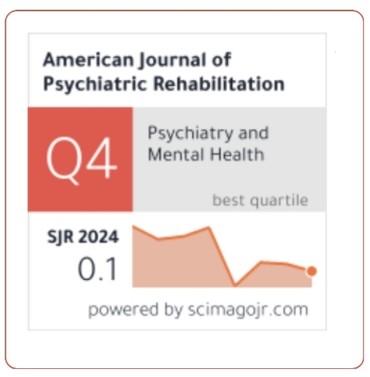Determination of Optimal Dietary Tryptophan Requirements for the Fingerlings of Labeo rohita, Cirrhinus mrigala, and Catla catla to Study Growth and Hematological Parameters under Stress.
DOI:
https://doi.org/10.69980/ajpr.v28i1.197Keywords:
Tryptophan (TRP), Hematological Parameters, Growth performance, Temperature StressAbstract
Dietary tryptophan, an essential amino acid, enhances stress resilience, growth performance, and hematological health in fish under temperature fluctuations, negatively impacting their growth and physiological functions. This twelve-week study investigated the effects of dietary tryptophan (TRP) supplementation on growth performance and hematological parameters in three major carp species: Labeo rohita, Cirrhinus mrigala, and Catla catla. Fish were divided into a control group (TO, 0% TRP) and three experimental groups fed varying TRP levels: T1 (0.39%), T2 (1.43%), and T3 (1.12%). Fish were acclimated to two temperature regimes (16°C and 32°C), with 96 fingerlings per species in 12 glass aquaria (n=8 per aquarium). Results showed that TRP supplementation significantly enhanced hematological profiles in all species. At high TRP levels, L. rohita exhibited the highest RBC counts (1.027×10^6/µL) and hemoglobin levels (8.37g/dL), while C. mrigala had RBC counts of 1.173×10^6/µL and Hb of 8.50g/dL, and C. catla had the highest RBC counts (1.227×10^6/µL) and Hb (10.20g/dL). Growth performance improved markedly with TRP, particularly at 1.43% supplementation and 32°C: L. rohita displayed a superior feed conversion ratio while C. mrigala and C. catla showed the maximal growth responses under these conditions. Dietary tryptophan supplementation demonstrated a significant positive correlation with enhanced growth performance and restoration of hematological parameters in freshwater carp exposed to thermal stress. Compared to the control group, TRP supplementation led to statistically significant improvements (P < 0.05) in weight gain, specific growth rate (SGR), and feed conversion ratio (FCR). The 1.43% inclusion level proved most effective, offering optimal mitigation of temperature stress while maximizing growth enhancement.
References
1. Ahmed, I., 2012. Dietary amino acid L-tryptophan requirement of fingerling Indian catfish, Heteropneustes fossilis (Bloch), estimated by growth and haemato-biochemical parameters. Fish Physiology and Biochemistry 38:1195-1209. https://doi.org/10.1007/s10695-012-9609-1.
2. Ahmed, I., and M.A. Khan. 2005. Dietary tryptophan requirement of fingerling Indian major carp, Cirrhinus mrigala (Hamilton). Aquaculture Research 36(7):687-695. https://doi.org/10.1111/j.1365-2109.2005.01275.x.
3. Akhtar, M.S., A.K. Pal, N.P. Sahu, A. Ciji, D.K. Meena, and P. Das. 2013. Physiological responses of dietary tryptophan fed Labeo rohita to temperature and salinity stress. Journal of Animal Physiology and Animal Nutrition 97(6):1075-83. https://doi.org/10.1111/jpn.12017.
4. AOAC, 2005. Official Methods of Analysis, 18th Ed. Association of Official Analytical Chemists (AOAC) International, Maryland, USA.
5. Cabanillas‐Gamez, M., L.M. Lopez, U. Bardullas, R.E. Espinoza-Villegas, C.D. True, and M.A. Galaviz. 2022. Effect of dietary tryptophan on blood and plasma parameters of striped bass Morone saxatilis, exposed to acute stressors. Latin American Journal of Aquatic Research 50(4):529-540. http://dx.doi.org/10.3856/vol50-issue4-fulltext-2929.
6. Chowdhury, M.A., N.C. Roy, and A. Chowdhury. 2020. Growth, yield, and economic returns of striped catfish (Pangasianodon hypophthalmus) at different stocking densities under floodplain cage culture system. Egyptian Journal of Aquatic Research 46(1):91-95. https://doi.org/10.1016/j.ejar.2019.11.010.
7. Ciji, A., N.P. Sahu, A.K. Pal, and M.S. Akhtar. 2015. Dietary L‐tryptophan modulates growth and immuno‐metabolic status of Labeo rohita juveniles exposed to nitrite. Aquaculture Research 46(8):2013-2024. https://doi.org/10.1111/are.12355.
8. Coloso, R.M., D.P. Murillo‐Gurrea, I.G. Borlongan, and M.R. Catacutan. 2004. Tryptophan requirement of juvenile Asian sea bass Lates calcarifer. Journal of Applied. Ichthyology 20(1):43-47. https://doi.org/10.1111/j.1439-0426.2004.00478.x.
9. Docan, A., V. Cristea, and L. Dediu. 2011. Influence of thermal stress on the hematological profile of Oncorhynchus mykiss held in different stocking densities in recirculating aquaculture systems. Lucrari Stiintifice, 55:267-272.
10. Docan, A., V. Cristea, I. Grecu, and L. Dediu. 2010. The haematological response of the European catfish, Silurus glanis reared at different densities in a" flow-through" production system. Archiva Zootechnica 13(2):63-70.
11. FAO, 2020. The state of world fisheries and aquaculture. In: In Sustainability in Action. Rome, Italy.
12. Farhat, and M.A. Khan. 2014. Dietary L‐tryptophan requirement of fingerling stinging catfish, Heteropneustes fossilis (Bloch). Aquaculture. Research 45(7):1224-1235. https://doi.org/10.1111/are.12066.
13. Fatma Abidi, S., and M.A. Khan. 2010. Dietary tryptophan requirement of fingerling rohu, Labeo rohita (Hamilton), based on growth and body composition. Journal of World Aquaculture Society 41(5):700-709. https://doi.org/10.1111/j.1749-7345.2010.00412.x.
14. Gaylord, T.G., S.D. Rawles, and K.B. Davis. 2005. Dietary tryptophan requirement of hybrid striped bass (Morone chrysops× M. saxatilis). Aquaculture Nutrition 11(5):367-374. https://doi.org/10.1111/j.1365-2095.2005.00360.x.
15. Hakim Y, Z. Uni, G. Hulata, and S. Harpaz. 2006. Relationship between intestinal brush borderon enzymatic activity and growth rate in tilapias fed diets containing 30% or 48% protein. Aquaculture 257(1-4):420-428. https://doi.org/10.1016/j.aquaculture.2006.02.034.
16. Hayat, S., 2009. Studies on the growth performance and meat quality of metal-stressed fish reared under a semi-intensive pond culture system. Ph.D. Thesis, Department of Zoology and Fisheries, University of Agriculture, Faisalabad, Pakistan. pp:195.
17. Herrera, M., J.M. Mancera, and B. Costas. 2019. The Use of Dietary Additives in Fish Stress Mitigation: Comparative Endocrine and Physiological Responses. Frontier in Endocrinology 10:447. https://doi.org/10.3389/fendo.2019.00447.
18. Hoseini, S.M., A. Perez-Jimenez, B. Costas, R. Azeredo, and M. Gesto. 2019. Physiological roles of tryptophan in teleosts: current knowledge and perspectives for future studies. Reviews in Aquaculture 11(1):3-24. https://doi.org/10.1111/raq.12223
19. Hur, J.W., and H.R. Habibi. 2007. Physiological response and hematological characteristics of goldfish (Carassius auratus) to water temperature shock. Korean Journal of Ichthyology 19(2):93-100.
20. Johnston, W.L., J.L. Atkinson, J.W. Hilton, and K.E. Were. 1990. Effect of dietary tryptophan on plasma and brain tryptophan, brain serotonin, and brain 5-hydroxyindoleacetic acid in rainbow trout. The Journal of Nutritional Biochemistry 1(1):49-54. https://doi.org/10.1016/0955-2863(90)90100-Y.
21. Kumar, P., M. Kailasam, S.N. Sethi, K. Sukumaran, G. Biswas, R. Subburaj, G. Thiagarajan, T.K. Ghoshal, and K.K. Vijayan. 2017. Effect of dietary L-tryptophan on cannibalism, growth and survival of Asian seabass, Lates calcarifer (Bloch, 1790) fry. Indian Journal of Fisheries 64(2):28-32. DOI: 10.21077/ijf.2017.64.2.61333-05.
22. Kumar, P., A.K. Pal, N.P. Sahu, A.K. Jha, N. Kumar, L. Christina, and P. Priya. 2018. Dietary L-Tryptophan potentiates non-specific immunity in Labeo rohita fingerlings reared under elevated temperature. Journal of Thermal Biology 74:55-62. https://doi.org/10.1016/j.jtherbio.2018.03.010.
23. Lee, R.G., J. Foerster, J. Jukens, F. Paraskevas, J.P. Greer and G.M. Rodgers. 1998. Wintrobe's Clinical Hematology, 10th Ed. Lippincott Williams and Wilkins, New York, USA.
24. Lepage, O., O.Tottmar, and S.Winberg. 2002. Elevated dietary intake of L-tryptophan counteracts the stress-induced elevation of plasma cortisol in rainbow trout (Oncorhynchus mykiss). Journal of Experimental Biology 205(23):3679-3687. https://doi.org/10.1242/jeb.205.23.3679.
25. Machado, M., R. Azeredo, A. Domingues, S. Fernandez-Boo, J. Dias, L.E.C. Conceicao, and B. Costas. 2019. Dietary tryptophan deficiency and its supplementation compromises inflammatory mechanisms and disease resistance in a teleost fish. Scientific Reports 9(1):1-15. https://doi.org/10.1038/s41598-019-44205-3.
26. Maulu, S., O.J. Hasimuna, L.H. Haambiya, C. Monde, C.G. Musuka, T.H. Makorwa, B.P. Munganga, K.J. Phiri, and J.D. Nsekanabo. 2021. Climate change effects on aquaculture production: sustainability implications, mitigation, and adaptations. Frontiers in Sustainable Food Systems 5:1-16. https://doi.org/10.3389/fsufs.2021.609097.
27. Miao, S., E. Chang, B. Han, X. Zhang, X. Liu, Z. Zhou, and Y. Zhou. 2021. Dietary tryptophan requirement of northern snakehead, Channa argus (Cantor, 1842). Aquaculture 542:1-8. https://doi.org/10.1016/j.aquaculture.2021.736904.
28. Morandini, L., M.R. Ramallo, R.G. Moreira, C. Hocht, G.M. Somoza, A. Silva, and M. Pandolfi. 2015. Serotonergic outcome, stress and sexual steroid hormones, and growth in a South American cichlid fish fed with an L-tryptophan enriched diet. General and Comparative Endocrinology 223:27-37. https://doi.org/10.1016/j.ygcen.2015.10.005.
29. Nguyen, L., S.M. Salem, G.P. Salze, H. Dinh, and D.A. Davis. 2019. Tryptophan requirement in semi-purified diets of juvenile Nile tilapia Oreochromis niloticus. Aquaculture 502:258-267. https://doi.org/10.1016/j.aquaculture.2018.12.049.
30. NRC (National Research Council), 2011. Nutrient Requirements of Fish and Shrimp. The National Academy Press, Washington, DC.
31. Panase, P., and K. Mengumphan. 2015. Growth performance, length weight relationship and condition factor of backcross and reciprocal hybrid catfish. International Journal of Zoological Research 11:57-64. DOI: 10.3923/ijzr.2015.57.64.
32. Pewitt, E., S. Castillo, A. Velasquez, and D.M. Gatlin III. 2017. The dietary tryptophan requirement of juvenile red drum, Sciaenops ocellatus. Aquaculture 469:112-116. https://doi.org/10.1016/j.aquaculture.2016.11.030.
33. Pianesso, D., J.R. Neto, L.P. Da Silva, F.R. Goulart, T.J. Adorian, P.I. Mombach, B.B. Loureiro, M.O. Dalcin, D.A. Rotili, and R. Lazzari. 2015. Determination of tryptophan requirements for juvenile silver catfish (Rhamdia quelen) and its effects on growth performance plasma and hepatic metabolites and digestive enzymes activity. Journal of Animal Feed Science and Technology 210:172-183. https://doi.org/10.1016/j.anifeedsci.2015.09.025.
34. Shahjahan, M., M.S. Khatun, M.M. Mun, S.M., Islam, M.H. Uddin, M. Badruzzaman, and S. Khan. 2020. Nuclear and cellular abnormalities of erythrocytes in response to thermal stress in common carp Cyprinus carpio. Frontiers in Physiology 11:543. https://doi.org/10.3389/fphys.2020.00543.
35. Stevens, M.L., 1997. Fundamentals of Clinical Hematology. WB Saunders, Philadelphia, PA.
36. Stewart, H.A., D.L. Aboagye, S.W. Ramee, and P.J. Allen. 2019. Effects of acute thermal stress on acid-base regulation, haematology, ion‐osmoregulation and aerobic metabolism in Channel Catfish (Ictalurus punctatus). Aquaculture Research 50(8):2133-2141. https://doi.org/10.1111/are.14093.
37. Subasinghe, R., D.Soto, and J.Jia. 2009. Global aquaculture and its role in sustainable development. Reviews in Aquaculture 1:2-9. https://doi.org/10.1111/j.1753-5131.2008.01002.x.
38. Tachibana, L., G.S. Telli, D. de Carla Dias, G.S. Goncalves, C.M. Ishikawa, R.B. Cavalcante, M.M. Natori, S.B. Hamed, and M.J.T. Ranzani-Paiva. 2020. Effect of feeding strategy of probiotic Enterococcus faecium on growth performance, hematologic, biochemical parameters and non-specific immune response of Nile Tilapia. Aquaculture Reports 16:100277. https://doi.org/10.1016/j.aqrep.2020.100277.
39. Tang, L., L. Feng, C.Y. Sun, G.F. Chen, W.D. Jiang, K. Hu, Y. Liu, J. Jiang, S.H. Li, S.Y. Kuang, and X.Q. Zhou. 2013. Effect of tryptophan on growth, intestinal enzyme activities and TOR gene expression in juvenile Jian carp (Cyprinus carpio var. Jian): studies in vivo and in vitro. Aquaculture 412:23-33. https://doi.org/10.1016/j.aquaculture.2013.07.002.
40. Tejpal, C.S., A.K. Pal, N.P. Sahu, J.A. Kumar, N.A. Muthappa, S. Vidya, M.G. and Rajan. 2009. Dietary supplementation of L-tryptophan mitigates crowding stress and augments the growth in Cirrhinus mrigala fingerlings. Aquaculture 293(3-4):272-277. https://doi.org/10.1016/j.aquaculture.2008.09.014.
41. Tejpal, C.S., E.B. Sumitha, A.K. Pal, H.S. Murthy, N.P. Sahu, and G.M. Siddaiah. 2014. Effect of dietary supplementation of L-tryptophan on thermal tolerance and oxygen consumption rate in Cirrhinus mrigala fingerlings under varied stocking density. Journal of Thermal Biology 41:59-64. https://doi.org/10.1016/j.jtherbio.2014.02.008.
42. Wagner, J.J., and T.L. Stanton. 2012. Formulating rations with the Pearson square (Vol. 1, p. 618). Colorado State University Extension, USA.
43. Yousefi, M., M. Paktinat, N. Mahmoudi, A. Perez-Jimenez, and S.M. Hoseini. 2016. Serum biochemical and non-specific immune responses of rainbow trout (Oncorhynchus mykiss) to dietary nucleotide and chronic stress. Fish Physiology and Biochemistry 42:1417-1425. DOI 10.1007/s10695-016-0229-z.
44. Zaminhan, M., W.R. Boscolo, D.H. Neu, A. Feiden, V.R.B. Furuya, and W.M. Furuya. 2017. Dietary tryptophan requirements of juvenile Nile tilapia fed corn-soybean meal-based diets. Journal of Animal Feed Science and Technology 227:62-67. https://doi.org/10.1016/j.anifeedsci.2017.03.010.
45. Zaminhan, M., M. Michelato, V.R.B. Furuya, W.R. Boscolo, F.E. Araujo, T.P. Cruz, A.V. Urbich, and W.M. Furuya. 2018. Total and available tryptophan requirement of Nile tilapia, Oreochromis niloticus, fingerlings. Aquaculture Nutrition 24(5):1553-1562. https://doi.org/10.1111/anu.12792.
46. Zehra, S., and M.A. Khan. 2015. Dietary tryptophan requirement of fingerling Catla catla (Hamilton) based on growth, protein gain, RNA/DNA ratio, haematological parameters and carcass composition. Aquaculture Nutrition 21(5):690-701. https://doi.org/10.1111/anu.12198.
47. Zhao, Y., X.Y. Wu, S.X. Xu, J.Y. Xie, K.W. Xiang, L. Feng, Y. Liu, W.D. Jiang, P. Wu, J. Zhao, and X.Q. Zhou. 2019. Dietary tryptophan affects growth performance, digestive and absorptive enzyme activities, intestinal antioxidant capacity, and appetite and GH–IGF axis-related gene expression of hybrid catfish (Pelteobagrus vachelli♀× Leiocassis longirostris♂). Fish Physiology and Biochemistry 45:1627-1647. https://doi.org/10.1007/s10695-019-00651-4.
Downloads
Published
Issue
Section
License
Copyright (c) 2025 American Journal of Psychiatric Rehabilitation

This work is licensed under a Creative Commons Attribution 4.0 International License.
This is an Open Access article distributed under the terms of the Creative Commons Attribution 4.0 International License permitting all use, distribution, and reproduction in any medium, provided the work is properly cited.









